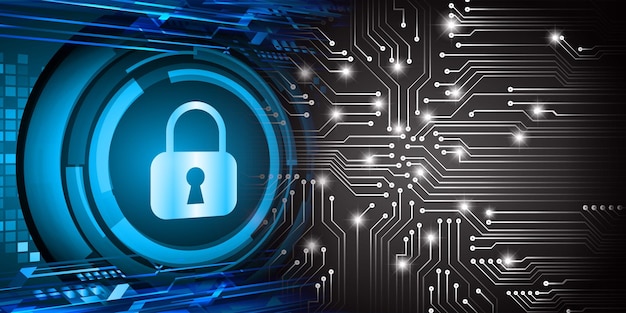
Image Source: FreeImages
The rapid growth of social media platforms has provided countless opportunities for individuals and businesses to connect, share, and learn from one another. However, this digital revolution has also opened the door for cyber threats that can compromise the security and privacy of users. In this article, we will explore the importance of cybersecurity in the realm of social media, the need for proper social media hygiene, and the impact on mental health.The Cybersecurity Landscape in Social Media
Social media platforms have become an integral part of our daily lives, with billions of people worldwide using them for various purposes. While these platforms offer numerous benefits, they also present several cybersecurity risks that users must be aware of and prepared to deal with.
Conventional Threats
Conventional threats have been present since the inception of social media and continue to pose a significant risk to users. Some of these threats include:
- Spam attacks: Unsolicited bulk messages often contain malicious links or attempt to gather sensitive information.
- Malware attacks: Malicious software designed to infiltrate and damage computers, steal data, or gain unauthorized access to systems.
- Phishing attacks: Social engineering tactics aimed at tricking users into revealing sensitive information or downloading malware.
Modern Threats
With the advancement of technology, cybercriminals have developed more sophisticated methods of targeting social media users. These modern threats include:
- Data aggregation: Cybercriminals can gather information from multiple social media platforms to build a comprehensive profile of a target, potentially leading to identity theft or targeted attacks.
- Relationship exploitation: Attackers can leverage the relationships and connections of social media users to gain access to their networks and spread malicious content or conduct phishing campaigns.
- Disinformation campaigns: Spreading false or misleading information on social media platforms to manipulate public opinion or cause confusion and chaos.
Targeted Threats
Targeted threats are attacks specifically designed to target a particular individual or organization. Anyone with a personal grudge or a specific agenda can carry out these attacks. Some examples of targeted threats include:
- Impersonation attacks: Creating fake profiles or accounts to impersonate a real person or organization, potentially leading to fraud, identity theft, or spreading malicious content.
- Spear phishing: Highly targeted phishing attacks that use detailed information about the victim to create a more convincing and effective scam.
- Whaling attacks: A spear-phishing attack that targets high-level executives or individuals accessing valuable information or resources.
The Importance of Social Media Hygiene
Practicing good social media hygiene is critical in mitigating the risks associated with using these platforms. Users should adopt the following habits to protect themselves and their organizations from potential cyber threats:
- Limit the information shared on social media: Be cautious about what you post online, and avoid sharing sensitive or personal information that cybercriminals could exploit.
- Regularly review privacy settings: Ensure your privacy settings on all social media platforms are up to date and configured to limit the exposure of your information.
- Be mindful of your connections: Verify friend requests and connections to ensure they are legitimate, and avoid accepting requests from unknown individuals.
- Use strong, unique passwords: Create complex and unique passwords for each social media account, and never reuse passwords across multiple platforms.
- Enable multi-factor authentication (MFA): Add a layer of security by enabling MFA on your accounts, which requires a secondary verification form before granting access.
- Be cautious with links and downloads: Avoid clicking on suspicious links or downloading content from unknown sources, as these can lead to malware infections or phishing attacks.
- Monitor your online presence: Search for your name and other personal information to identify potential risks or exposure.
- Educate yourself on social engineering tactics: Understand the methods used by cybercriminals to manipulate users into revealing sensitive information or downloading malware, and learn how to recognize and avoid such schemes.
The Impact of Social Media on Mental Health
In addition to the cybersecurity risks associated with social media, these platforms can significantly impact users’ mental health. Excessive use of social media has been linked to increased anxiety, depression, loneliness, decreased self-esteem, and overall life satisfaction.
To maintain a healthy balance between social media use and mental well-being, consider the following tips:
- Set boundaries for social media use: Limit the time spent on social media platforms and avoid using them during certain times of the day, such as before bedtime.
- Focus on quality connections: Engage with friends and family members who provide positive, supportive interactions, and avoid toxic or harmful relationships.
- Take breaks from social media: Regularly disconnect from social media platforms to focus on other activities and interests, promoting a healthier balance in your daily life.
- Practice mindfulness: Engage in activities that promote mindfulness and self-awareness, such as meditation, yoga, or journaling.
- Seek professional help if needed: If social media use is negatively impacting your mental health, consider seeking the guidance of a mental health professional.
Conclusion
The intersection of cybersecurity and social media presents numerous challenges and risks for individuals and organizations. By practicing good social media hygiene and being mindful of the potential impact on mental health, users can enjoy the benefits of these platforms while minimizing the associated risks. It is essential for users to remain vigilant and educated about the evolving cybersecurity landscape and take proactive steps to protect themselves and their organizations from potential threats.
REFERENCES:
https://link.springer.com/article/10.1007/s40747-021-00409-7
https://www.919sow.afrc.af.mil/News/Article-Display/Article/3379931/cyber-hygiene-keeping-safe-on-social-media/
https://cyware.com/news/analyzing-the-relationship-between-social-media-and-cyber-threats-47954e5b
https://www.upguard.com/blog/the-impact-of-social-media-on-cybersecurity
https://www.eweek.com/security/social-media-cybersecurity/


